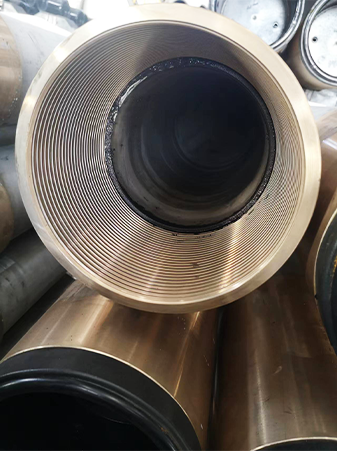- Afrikaans
- Albanian
- Amharic
- Arabic
- Armenian
- Azerbaijani
- Basque
- Belarusian
- Bengali
- Bosnian
- Bulgarian
- Catalan
- Cebuano
- Corsican
- Croatian
- Czech
- Danish
- Dutch
- English
- Esperanto
- Estonian
- Finnish
- French
- Frisian
- Galician
- Georgian
- German
- Greek
- Gujarati
- Haitian Creole
- hausa
- hawaiian
- Hebrew
- Hindi
- Miao
- Hungarian
- Icelandic
- igbo
- Indonesian
- irish
- Italian
- Japanese
- Javanese
- Kannada
- kazakh
- Khmer
- Rwandese
- Korean
- Kurdish
- Kyrgyz
- Lao
- Latin
- Latvian
- Lithuanian
- Luxembourgish
- Macedonian
- Malgashi
- Malay
- Malayalam
- Maltese
- Maori
- Marathi
- Mongolian
- Myanmar
- Nepali
- Norwegian
- Norwegian
- Occitan
- Pashto
- Persian
- Polish
- Portuguese
- Punjabi
- Romanian
- Russian
- Samoan
- Scottish Gaelic
- Serbian
- Sesotho
- Shona
- Sindhi
- Sinhala
- Slovak
- Slovenian
- Somali
- Spanish
- Sundanese
- Swahili
- Swedish
- Tagalog
- Tajik
- Tamil
- Tatar
- Telugu
- Thai
- Turkish
- Turkmen
- Ukrainian
- Urdu
- Uighur
- Uzbek
- Vietnamese
- Welsh
- Bantu
- Yiddish
- Yoruba
- Zulu
galvanized steel pipe coupling
Understanding Galvanized Steel Pipe Couplings
Galvanized steel pipe couplings are essential components in various plumbing and construction applications, providing a reliable means of connecting pipes in a robust and durable manner. This article delves into the characteristics, applications, and benefits of using galvanized steel pipe couplings, elucidating why they are favored in infrastructure projects.
What is Galvanized Steel?
Before discussing couplings, it’s important to understand what galvanized steel is. Galvanization is a process where steel is coated with a layer of zinc to protect it from corrosion. This protective barrier allows galvanized steel to maintain its strength and durability even in harsh environmental conditions. Consequently, galvanized steel is widely used in plumbing, construction, and many other industries where metal is required to withstand moisture and other corrosive elements.
Characteristics of Galvanized Steel Pipe Couplings
Galvanized steel pipe couplings are designed to connect two pieces of piping, facilitating seamless flow in systems such as water supply lines, gas lines, and wastewater management. Here are some of their notable characteristics
1. Corrosion Resistance The zinc coating on galvanized steel prevents rust and corrosion, extending the lifespan of the coupling and the pipes to which it connects. This is especially critical in outdoor or exposed installations.
2. Strength and Durability Galvanized steel couplings provide excellent tensile strength, making them suitable for high-pressure systems. They can withstand mechanical stress and adapt to temperature changes without compromising structural integrity.
3. Versatility Available in various sizes and configurations, these couplings can accommodate different types and diameters of pipes, facilitating easy installation in a range of settings.
4. Low Maintenance The long-lasting nature of galvanized steel means that these couplings require less frequent replacement or maintenance compared to other materials, leading to reduced operational costs over time.
Applications of Galvanized Steel Pipe Couplings
The versatility and resilience of galvanized steel pipe couplings make them suitable for numerous applications, including
galvanized steel pipe coupling

1. Plumbing Galvanized couplings are commonly used in water supply systems where strength and corrosion resistance are critical. They are often employed in residential plumbing, commercial buildings, and industrial settings.
2. Gas Lines The robust nature of galvanized steel makes these couplings ideal for gas installations, as they ensure secure connections that can withstand pressure and prevent leaks.
3. Agricultural Systems In agricultural applications, galvanized couplings are used in irrigation systems and water transport, where exposure to water and chemicals is frequent.
4. Construction Galvanized steel pipe couplings are integral in building frameworks, providing connectivity in scaffolding and structural support elements.
Benefits of Using Galvanized Steel Pipe Couplings
Using galvanized steel pipe couplings offers several advantages
- Cost-Effectiveness Although the initial investment may be higher than non-galvanized options, the durability and reduced need for replacement yield long-term cost savings.
- Safety The reliability of galvanized couplings reduces the risk of leaks or failures in piping systems, enhancing overall safety in domestic, industrial, and commercial settings.
- Sustainability The longevity of galvanized steel contributes to sustainable construction practices, minimizing the need for frequent replacements and the associated material waste.
Conclusion
In summary, galvanized steel pipe couplings play a vital role in piping systems across various industries. Their corrosion resistance, strength, versatility, and low maintenance requirements make them a preferred choice for many applications. Understanding these components not only aids in selecting the right materials for a project but also underscores the importance of reliable connections in maintaining the integrity and efficiency of fluid transport systems. As infrastructure continues to evolve, the role of such durable couplings remains crucial in ensuring safe and efficient operations.
-
Tubing Pup Joints: Essential Components for Oil and Gas OperationsNewsJul.10,2025
-
Pup Joints: Essential Components for Reliable Drilling OperationsNewsJul.10,2025
-
Pipe Couplings: Connecting Your World EfficientlyNewsJul.10,2025
-
Mastering Oilfield Operations with Quality Tubing and CasingNewsJul.10,2025
-
High-Quality Casing Couplings for Every NeedNewsJul.10,2025
-
Boost Your Drilling Efficiency with Premium Crossover Tools & Seating NipplesNewsJul.10,2025







